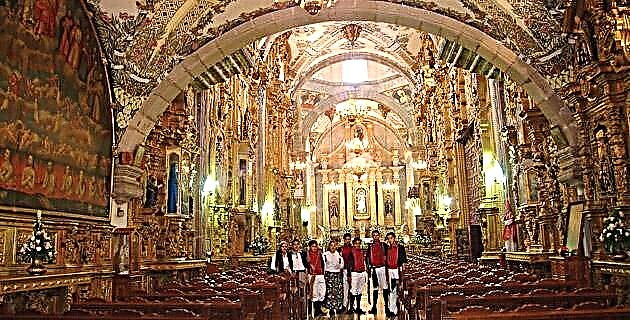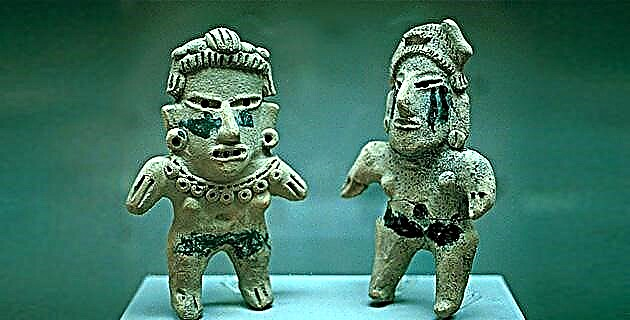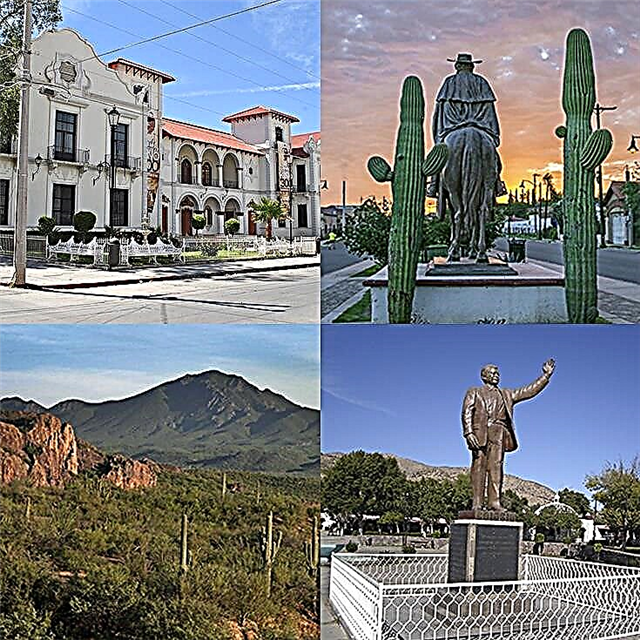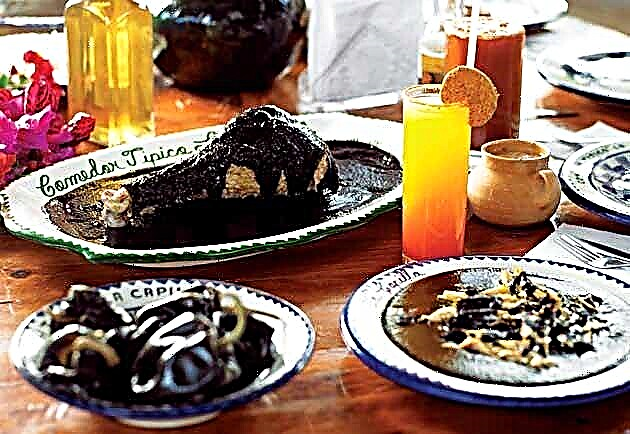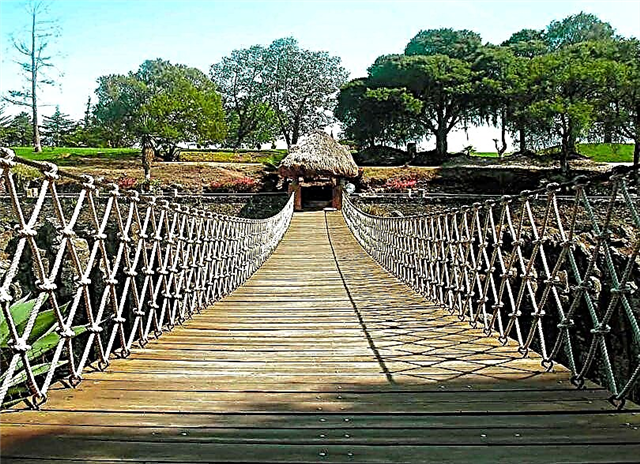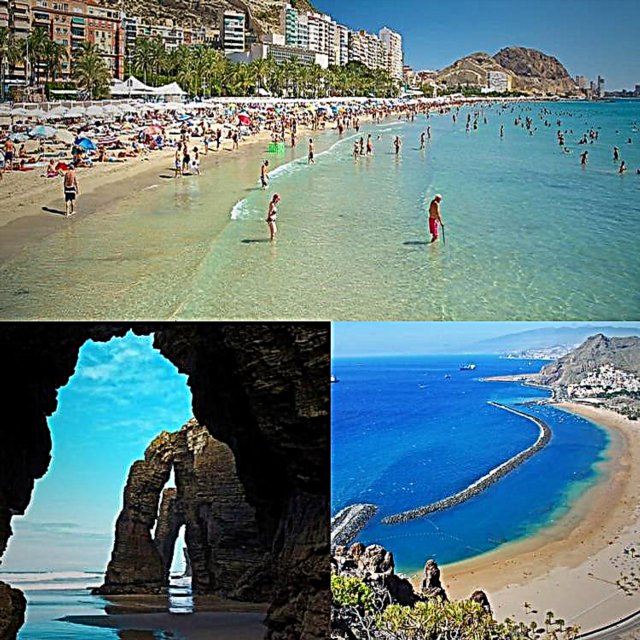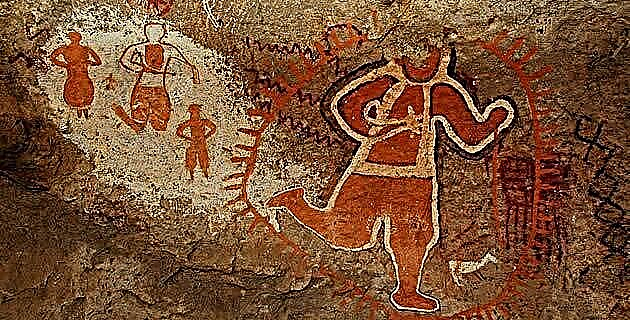
Although his style was somewhat naive and childish, as if made by a child, the painting was impressive realism. Almost like a photograph ...
My first encounter with a Chihuahua rock art site occurred over 12 years ago. It was in Chomachi, in the middle of the Sierra Tarahumara. There on the wall of a wide rock shelter stood out the image of a deer hunting scene, an elaborate image, painted on the stone, hundreds of years ago. Later, throughout the many explorations that I carried out in the state, I came across numerous rock art sites, both in the mountains, in the desert and on the plains. The testimony of the ancients was there, captured on the stones. Each of those encounters was something unusual and unexpected.
Samalayuca and Candelaria
As I visited more and more rock art sites, both painting and petroglyphs, I was first surprised by their diversity and number. There are so many sites, many of them located in remote places, with difficult access and a hostile environment. The desert was the region with the greatest presence of these testimonies. It seems that the ancients were more attracted to the warm and open, infinite horizons. Two sites are extraordinary: Samalayuca and Candelaria. In the first, petroglyphs dominated; and in the second, painting. Both with very ancient presences, since archaeologists suppose that some of their manifestations date back to archaic times of more than 3,000 years ago. In both, the presence of the bighorn sheep is abundant, traced with different techniques in a masterful way. In Candelaria, the fine lines of the paintings are surprising. Their characteristic type has defined the “Candelaria style”, in which the figures of shamans and hunters stand out with their plumes and spears.
In Samalayuca there are a variety of representations of great beauty, its bighorn sheep (some made with the pointillism technique), its anthropomorphs (where the human figures holding hands that open in a zig-zag towards infinity stand out), as well as the shaman with his horned mask. The atlatls or dart-launchers (antecedent of the bow and arrow), arrowheads, Venus, suns, and many other abstract figures are also represented. They are a couple of kilometers of rocks full of petroglyphs, and it is like walking from surprise to surprise.
Conchos mouthpiece
It is another of the surprising places in the desert, at the entrance to the Peguis Canyon. On the left bank of the canyon, the rock is shown with countless magical symbols, among which are arrowheads, atlatls, anthropomorphs, hands, counters, peyotes and shamans. The site is beautiful because of the majesty of the canyon and the immediate presence of the Conchos River (hence its name).
Arroyo de los Monos
It is assumed that they were made by the same culture that Casas Grandes or Paquimé did. Petroglyphs predominate. The figures are on stone fronts that look like ancient altars. Human and animal figures are mixed with interesting abstractions.
The Cave of the Monas
It is the maximum expression of these amazing sites. Nestled in the plains further south, close to the city of Chihuahua, they record 3,000 years of human presence, as there are paintings that range from the Archaic to the 18th century. According to the archaeologist Francisco Mendiola, a peyote speech predominates in the images of this cave, since this plant is represented in several ways, and a peyote ceremony is also observed, almost like a photograph. Christian crosses, human figures, stars, suns, peyotes, bear tracks, birds, and hundreds of abstract figures make this cave unique within the rock art of northern Mexico.
Apache rock art
There are in these mountainous areas of the plain numerous sites with representations of this art. Apache indigenous groups spent 200 years on the warpath, and they left us their testimonies, especially in the Sierra del Nido and in the Sierra de Majalca. These mountains offered refuge to Apache chiefs such as Victorio, Ju and Jerónimo, whose presence is still remembered.
Deer-headed snake?
In the Sierra Tarahumara is where the existence of rock art is least seen. They are found mainly on the walls of the deep canyons that run through and define this region. At the foot of the mountains, near the community of Balleza, an important site with real and fantastic animals is located. There the deer attracts attention, engraved on the rock in a masterful way. But above all, a fantastic animal surprises, a serpent with a deer head, carved on the stone next to a sun.
The rock art will not cease to amaze us. One of the aspects that attracts the most attention is its permanence. The natural elements have not been enough to erase them. Thanks to the patient work of people like Francisco Mendiola, we know about these impressive sites.
Thus, they leave us a great message, the fears and hopes of the human being do not change, deep down they remain the same. What has changed is the way of capturing them. Thousands of years ago it was done in images on stone, now it is done in digital images.
The cave route in Chihuahua is a new way of traveling that will bring you great satisfaction, since nowhere in the world will you find anything like it.
They are memories of a magical world of which unfortunately we lost their interpretations.
It seems that the ancients were more attracted to the warm and open, infinite horizons.

